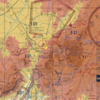- Joined
- Jul 29, 2011
- Messages
- 1,018
- Display Name
Display name:
MountainDude
This is very sad.
It may be the first time I heard that DA-40 crashed with an ensuing fire, though that has to be confirmed.
https://kutv.com/news/local/4-victims-identified-after-fatal-iron-county-plane-crash
It may be the first time I heard that DA-40 crashed with an ensuing fire, though that has to be confirmed.
https://kutv.com/news/local/4-victims-identified-after-fatal-iron-county-plane-crash


